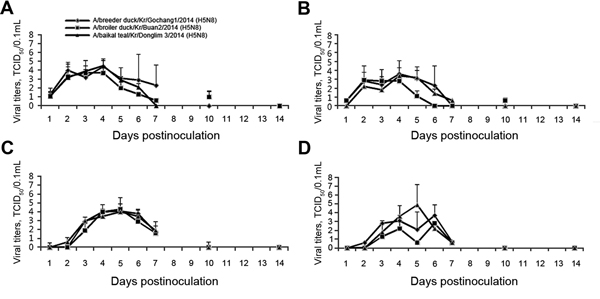Volume 21, Number 2—February 2015
Research
Novel Reassortant Influenza A(H5N8) Viruses among Inoculated Domestic and Wild Ducks, South Korea, 2014
Figure

Figure. Virus isolation from oropharyngeal (OP) or cloacal (CL) swab samples collected from domestic ducks exposed to influenza viruses by inoculation or contact with infected ducks. Nine ducks were intranasally inoculated with 106.5 egg infectious dose titer of A/breeder ducks/Kr/Gochang1/2014 (H5N8), A/broiler duck/Kr/Buan2/2014 (H5N8), or A/Baikal teal/Kr/Donglim3/2014 (H5N8) viruses (A and B). Six domestic ducks that were not inoculated were co-housed with 3 contact groups (2 in each group) of infected ducks (C and D). TCID50, 50% tissue culture infectious dose. Error bars indicate SD.
Page created: January 20, 2015
Page updated: January 20, 2015
Page reviewed: January 20, 2015
The conclusions, findings, and opinions expressed by authors contributing to this journal do not necessarily reflect the official position of the U.S. Department of Health and Human Services, the Public Health Service, the Centers for Disease Control and Prevention, or the authors' affiliated institutions. Use of trade names is for identification only and does not imply endorsement by any of the groups named above.